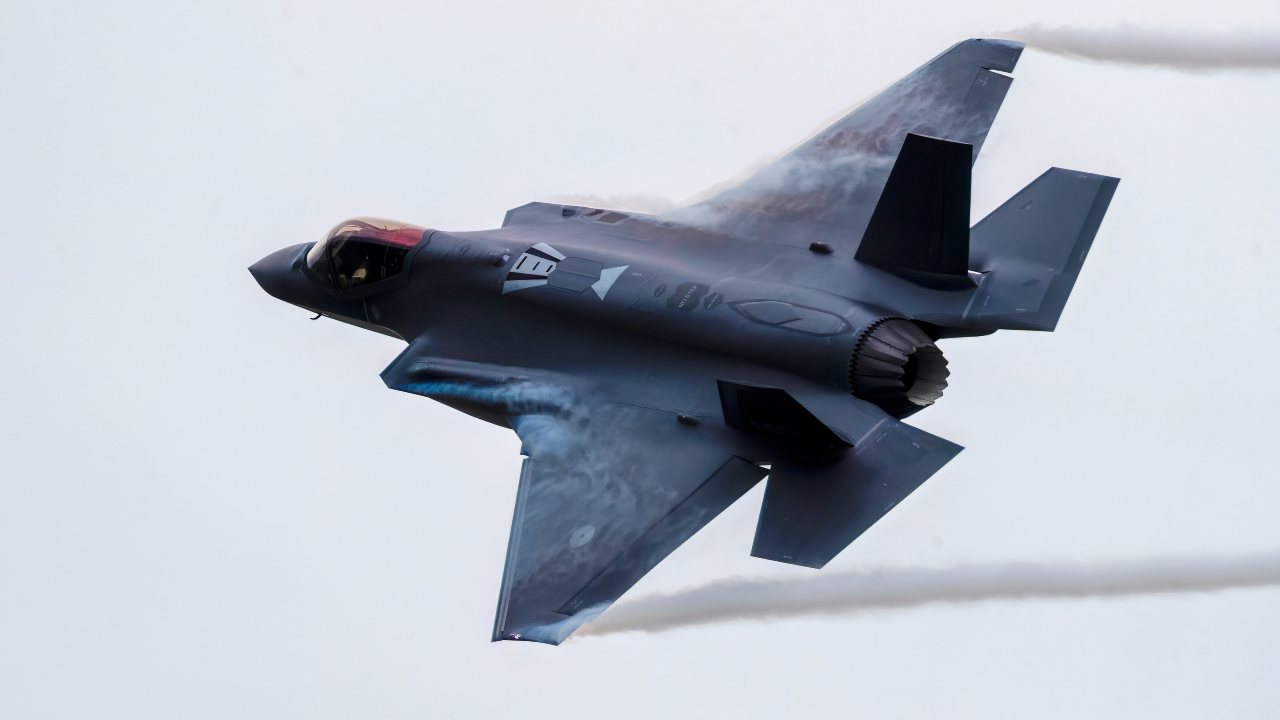The F-35 Fighter is NATOs Tactical Nuclear Bomber
Among the many roles the stealth, fifth-generation F-35 Lightning II can perform is that of a tactical nuclear bomber.
What You Need to Know: NATO has launched its annual nuclear deterrence exercise "Steadfast Noon," involving over 60 aircraft and more than 2,000 personnel. The two-week drills, conducted over Western Europe, aim to test the Alliance's nuclear capabilities and involve fighter jets that can carry U.S. nuclear weapons.

-This year’s exercise includes nuclear-capable aircraft like the F-16, B-52H, and for the first time, Dutch F-35s, now certified for nuclear roles. Steadfast Noon underscores NATO's commitment to maintaining nuclear deterrence while Moscow was informed of the exercise.
-The fifth-generation F-35 is highlighted for its ability to deploy the B61-12 nuclear gravity bomb with precision.
NATO Tests Nuclear-Capable F-35s and B-52 Bombers in Annual "Steadfast Noon" Exercise
NATO kicked off "Steadfast Noon" on Monday, the international military alliance's annual nuclear exercise. Aerial drills involving more than 60 aircraft will take place over Western Europe during the next two weeks – and while it doesn't involve any live weapons, it is noted for including fighter jets that can carry U.S. nuclear weapons.
"Nuclear deterrence is the cornerstone of Allied security," said NATO Secretary General Mark Rutte. "Steadfast Noon is an important test of the Alliance's nuclear deterrent and sends a clear message to any adversary that NATO will protect and defend all Allies."
The annual military exercises have been held annually each fall for more than a decade.
More than 2,000 military personnel from across NATO will take part in Steadfast Noon with aircraft deployed from eight different airbases, while aerial sorties will occur over Belgium, Denmark the Netherlands, the United Kingdom, and the North Sea.
As reported by The Associated Press, though the "bulk of the exercise is being held around 900 kilometers (560 miles) from Russia in the North Sea … Moscow has been informed about the drills."
Nuclear Deterrence
This year's Steadfast Noon involves nuclear-capable jet fighters and bombers, as well as fighter escorts, reconnaissance and electronic warfare (EW) and refueling aircraft. Among the nuclear-capable aircraft taking part in the exercises are the Panavia Tornado, the Lockheed Martin-produced F-16 Fighting Falcon, and the B-52H Stratofortress.
Though the Lockheed Martin F-35A Lightning II was employed in last year's annual exercise, this year marks the first time Dutch F-35s will take part after being declared "ready to perform nuclear roles," NATO announced.
"NATO's Washington Summit declaration makes clear that 'the fundamental purpose of NATO’s nuclear capability is to preserve peace, prevent coercion and deter aggression,' It states that 'as long as nuclear weapons exist, NATO will remain a nuclear alliance,'" the international coalition further explained.

The Nuclear-Capable F-35
Among the many roles the fifth-generation F-35 Lightning II can perform is that of tactical nuclear bomber.
As previously reported, in 2021, a pair of Lightning II aircraft successfully released B61-12 Joint Test Assemblies (JTAs) during the first Full Weapon System Demonstration, completing the final flight test exercise of the nuclear design certification process. The tests mimicked a real-world tactical gravity nuclear weapon release at the Tonopah Test Range in Nevada.
Once airborne, the F-35 test pilots flew to the Tonopah Test Range and released two B61-12 JTAs from operationally realistic flight envelopes. This event was the first release of the most representative B61-12 test asset from an operationally representative F-35A.
The B61-12 is a refurbished, consolidated version of earlier gravity bombs, including the B61-3, 4, and 7. It can offer four blast options measuring from 0.3 to 50 kilotons more than double the estimated yield of "Fat Man," the larger of two nuclear bombs the U.S. dropped in Japan in 1945 – according to the Air Force Times.
While other aircraft can carry the B61-12, the F-35 offers an advantage in that the ordnance can be stored in the Lightning II's internal bays, allowing the multirole fighter to maintain its stealth. In addition, it could strike a ground target with far greater precision than the Northrop B-2 Spirit.
Currently, there are around 150 American-controlled B-61 nuclear gravity bombs stationed in Belgium, Germany, the Netherlands, Italy and Turkey.
Author Experience and Expertise: Peter Suciu
Peter Suciu is a Michigan-based writer. He has contributed to more than four dozen magazines, newspapers, and websites with over 3,200 published pieces over a twenty-year career in journalism. He regularly writes about military hardware, firearms history, cybersecurity, politics, and international affairs. Peter is also a Contributing Writer for Forbes and Clearance Jobs. You can follow him on Twitter: @PeterSuciu. You can email the author: [email protected].
Image Credit: Creative Commons and/or Shutterstock.


